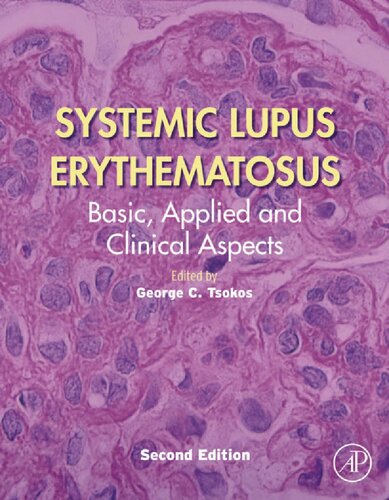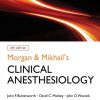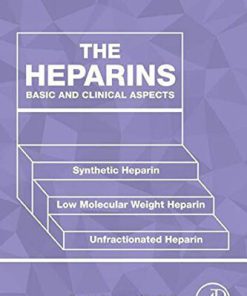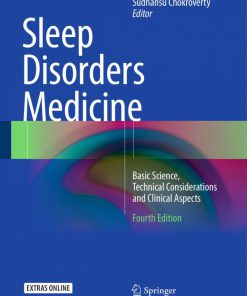Systemic Lupus Erythematosus Basic Applied and Clinical Aspects 2nd Edition by George 0128145528 9780128145524
$50.00 Original price was: $50.00.$25.00Current price is: $25.00.
Systemic Lupus Erythematosus Basic Applied and Clinical Aspects 2nd Edition George Tsokos – Ebook Instant Download/Delivery ISBN(s): 0128145528, 9780128145524

Product details:
- ISBN 10: 0128145528
- ISBN 13: 9780128145524
- Author: George Tsokos
This completely updated and expanded 2nd edition of Systemic Lupus Erythematosus, A Manual includes topics not covered previously with contributors who are at the forefront of each specific topic and with a global appeal. Each chapter is short and is presented critically with selected references, which should be valuable to a wider audience. This book combines basic with clinical science to help internists and specialists in the diagnosis and management of patients with SLE. It is a quick referral for people in the pharmaceutical industry in their efforts to bring much-needed drugs. It provides all the needed information to basic researchers old and new alike, who wish to enter the field of lupus and systemic autoimmunity in general.
Table of contents:
Part I – Epidemiology and diagnosis
Chapter 1 – History of systemic lupus erythematosus with an emphasis on certain recent major issues
History of clinical observations
The age of dermatology
Transition of lupus erythematosus to systemic lupus erythematosus
History of laboratory investigations
Development of clinical tests
History of genetics of SLE
History of therapy in SLE with an emphasis on the use of steroids
History of classification criteria for SLE
References
Chapter 2 – The patient
Improve the interactions with your patients
Do not make your patient wait
Smile as you enter the patient’s room
Make a visible show of hand washing
Shake hands
Acknowledge and greet others in the room
Ask open-ended questions
Provide a mechanism for your patient to set the agenda
Speak in nonmedical terms
Be honest
Learn to be empathetic
Always examine your patient
End the visit with, “Do you have any other concerns or questions?”
Consulting in the hospital
Improving adherence
Disability
Patient education
The lupus secrets
References
Chapter 3 – A plea of a young patient to the lupus experts
Reference
Chapter 4 – Epidemiology
Introduction
Incidence and prevalence
Distribution according to gender
Distribution according to age
Distribution according to ethnic/racial group
Distribution around the world
Factors that affect the course of SLE
Impact of race/ethnicity
Impact of gender
Mortality and survival in SLE
References
Chapter 5 – Measuring disease activity
References
Chapter 6 – Disease development and outcome
Historical perspective
Clinical manifestations
Assessment of disease activity
Disease damage
Patient reported outcomes
Mortality
Causes of death
Treatment guidelines and quality indicators
Conclusions
References
Chapter 7 – Socioeconomic aspects of SLE
Introduction
Sociodemographic determinants of health in SLE
Gender as a construct in risk and morbidity
Race/ethnicity as a multidimensional determinant of outcomes
Age and aging
Income, poverty, and educational attainment
Healthcare access and utilization
Health literacy
Health insurance
The economic burden of SLE
Work and disability
Individual and societal costs
Conclusion
References
Chapter 8 – Biomarkers in systemic lupus erythematosus
Introduction
Biomarker definition and validation
Biomarkers for diagnosis of SLE
Cell-bound complement activation products
Interferon-α and interferon-α-inducible genes
T-cell gene expression assays
DNA methylation
Plasma thermograms
Biomarkers for measuring SLE disease activity
Cell-bound complement activation proteins
Interferon-α and interferon-α-inducible genes
B-lymphocyte stimulating factor/B-cell activating factor
MicroRNAs
Tumor necrosis factor α
CD27high plasma cells
CD44+ T cells
Biomarkers to detect specific organ involvement
Lupus nephritis biomarkers
Antibodies to complement C1q
Monocyte chemoattractant protein-1
Neutrophil gelatinase-associated lipocalin
Urinary TWEAK
MicroRNAs
Hepcidin
Urinary biomarker panels
Central nervous system biomarkers
Anti-NMDA receptor antibody
Antiribosomal P antibody
Antiphospholipid antibodies
Platelet-bound C4d
Other
Cardiovascular system biomarkers
Respiratory system biomarkers
Lupus arthritis biomarkers
Genetic susceptibility and theranostics
Conclusions
References
Part II – Pathogenesis
Chapter 9 – Overview of the pathogenesis of systemic lupus erythematosus
Genetics
Epigenetics
Gender
Environment
Immune dysregulation
Tissue damage
Conclusions
References
Chapter 10 – System lupus erythematosus and the environment
Introduction
Infectious agents, dysbiosis the microbiome, and SLE
Cigarette smoking, alcohol and SLE
Cosmetics, chemicals, and risk of SLE
Ultraviolet radiation, vitamin D, and SLE
Drugs, vaccines, and SLE
Geography, socioeconomics, and SLE
Conclusion
References
Chapter 11 – Genes and genetics in human SLE
Introduction
Transcription factors
Clearance of apoptotic cells and immune complexes
Autophagy
Type I IFN pathway
NFkB pathway
Neutrophils and NETosis
T cell signaling
B cell signaling
Genes and phenotypes
SLE risk genes as therapeutic targets
Drug repositioning and predicting clinical outcomes
Conclusions
References
Chapter 12 – Monogenic lupus
Introduction
Complement deficiency
Deficiencies in DNA damage repair and clearance
DNase1L3
DNase II
DNase III/TREX1
Abnormalities of DNA sensing
Stimulator of interferon genes (STING)
IFIH1
Other interferonopathies
Apoptosis
Fas/FasL
Cell signaling
PKCδ
Ras
STAT1
Implications for SLE as a whole
Conclusion
References
Chapter 13 – Hormones
Sex hormones
Estrogen-estrogen receptor signaling
Estrogen and the immune response
Innate immune response
Adaptive immune response
B cells
T cells
Estrogen and SLE
Other hormones
Hormone therapy
Conclusions
References
Chapter 14 – Clinical aspects of the complement system in systemic lupus erythematosus
Introduction
General comments
Historical notes
Complement testing and its interpretation
Serum levels and hemolytic activities for C4 and C3
Interpretation of C4 and C3 complement tests in SLE
Consumption versus biosynthesis
Chronically low C4 and C3: How to interpret?
When C4 and C3 are discrepant
Cryoglobulins
Cold activation
Copy-number variation (CNV)
Alternative pathway activation
New developments
Assessing a therapeutic response
Interpretation
Renal biopsy
New connections for lupus and complement
Local synthesis
Activation by local proteases
Intracellular complement activation
Exogenous coating with opsonic fragments leads to endogenous consequences
People also search:
what is systemic lupus erythematosus (sle) quizlet
what is sle systemic lupus erythematosus
what is systemic lupus erythematosus
what is lupus systemic
what is the difference between lupus and systemic lupus
You may also like…
Biology and other natural sciences
Neotropical Social Wasps: Basic and applied aspects Fabio Prezoto
Medicine
The Heparins Basic and Clinical Aspects 1st Edition by David Green 0128187816 9780128187814
Biology and other natural sciences - Human Biology
Cookbooks
Medicine
Sleep Disorders Medicine Basic Science Technical Considerations and Clinical Aspects Chokroverty












